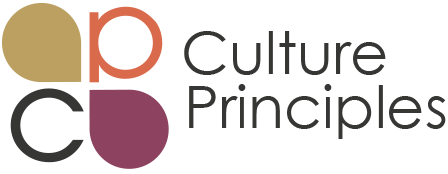 As we emerge from a divisive election season, many people find themselves navigating feelings about potential changes ahead—whether in favor of these changes or wary of what might come. In workplaces, this translates into a unique mix of emotions, opinions, and, for some, a need to filter or hide parts of themselves. The leaders I have spoken to feel the weight of this post-election atmosphere, unsure how to address sensitive topics without alienating people. But what if we could create a space where team members felt genuinely safe to show up as they are, express ideas openly, and engage in conversations, even when there’s disagreement?
As we emerge from a divisive election season, many people find themselves navigating feelings about potential changes ahead—whether in favor of these changes or wary of what might come. In workplaces, this translates into a unique mix of emotions, opinions, and, for some, a need to filter or hide parts of themselves. The leaders I have spoken to feel the weight of this post-election atmosphere, unsure how to address sensitive topics without alienating people. But what if we could create a space where team members felt genuinely safe to show up as they are, express ideas openly, and engage in conversations, even when there’s disagreement?
This is where psychological safety becomes essential. When people know they can bring a more complete version of themselves to work, they contribute more fully and authentically. This is good for employees and good for business. Here’s how we can prioritize psychological safety and why it matters for everyone involved.
What Is Psychological Safety?
Psychological safety, a concept advanced through Harvard professor Amy Edmondson’s research, describes an environment where people feel secure speaking up, asking questions, and even making mistakes without fearing negative consequences. Edmondson’s findings reveal that teams with strong psychological safety are often more innovative and adaptable because individuals feel free to share ideas and voice uncertainties. In inclusive workplaces, psychological safety goes even further—it fosters a space where every team member feels a true sense of belonging, no matter their background, beliefs, or experiences.
Imagine a workplace where no one has to “code-switch” (adjust language or behavior to fit in) or “cover” (conceal parts of their identity) just to feel accepted. Achieving psychological safety means mitigating these pressures, forming the foundation of any organization committed to a healthy, inclusive culture.
Why Psychological Safety Matters for Business
Beyond just creating a better workplace atmosphere, psychological safety has tangible benefits for business—engagement, productivity, and creativity increase when people feel safe to be themselves. Without the constant need to self-monitor, people can focus more fully on their work and bring their best ideas forward. This is where innovation happens, and it’s why high-performing teams often have one thing in common: they’ve fostered a culture of trust and openness.
When people don’t feel safe contributing fully, the impact ripples across the organization. Valuable ideas go unspoken, feedback is held back, and collaboration suffers. Especially now, as teams face new challenges that demand resilience and adaptability, psychological safety has become key to thriving in today’s workplace.
The Cost of Silence
In the absence of psychological safety, employees often adapt in ways that keep them guarded, which can have real consequences. For many, particularly those from historically marginalized groups, there’s a persistent pressure to “code-switch” or “cover” parts of themselves. Covering isn’t just an inconvenience; it’s a form of self-protection that can create deep stress and even trauma over time. When people feel they have to hide aspects of who they are just to be accepted, it places a constant strain on their mental and emotional energy. Over time, this can lead to burnout, disengagement, and an overall decline in well-being.
I remember a time in my own career when I found myself in an organization where my ideas didn’t hold value. I often share insights with a new perspective with the intent to enrich our work. But instead of being welcomed, my ideas were often brushed aside and labeled “not the right perspective.” I was told it wasn’t that I was wrong—just that my approach didn’t fit with the way things were typically done. Though softly spoken and perhaps even well-intentioned, these words felt like small but significant rejections. Each instance was a quiet signal that my voice didn’t align with what the organization valued.
I share this not to suggest that withdrawal is the best response in situations like this but instead as an example of what can happen when people lose steam in fighting the same old battles. Slowly, I began to withdraw. Rather than continue putting my ideas out there only to see them sidelined, I started keeping them to myself. I stopped speaking up, becoming less willing to expend the energy on contributions that weren’t wanted. Over time, I lost interest in contributing at all, feeling as though my voice didn’t matter in that space. It wasn’t a conscious choice at first, but rather a gradual retreat—a quiet decision to stay safe (read: a coping strategy) rather than risk further rejection.
These experiences—however small they may seem on the surface add up. For many employees, the burden of covering, holding back ideas, or censoring feedback has an actual cost. Exclusion doesn’t always come from loud or overt actions, and yet it can subtly undermine psychological safety. A simple phrase like, “That’s just not how we do things here,” or “Let’s focus on what we know works” may seem harmless, but for the person hearing it, these words can feel like a brick wall. Each small moment of self-censorship builds upon the last, creating a culture where people feel disconnected from their work and each other.
The result? The organization becomes less creative, less open, and ultimately, less resilient. Valuable ideas remain unshared, and feedback is stifled—all of which hold the organization back from the adaptability and innovation it needs to thrive in today’s world.
Creating psychological safety means breaking the cycle of silent exclusion that can slip into workplaces, often unnoticed. It requires leaders to be mindful of the subtle ways people might feel pushed aside, even when there’s no intent to cause harm. This work focuses on building spaces where everyone feels safe to show up fully and bring their ideas forward. When people know they belong, they can better engage with purpose, adding their unique perspectives and strengths to the team. Psychological safety not only serves to boost morale; it also provides a pathway to create resilient, innovative teams. By prioritizing this, leaders invest in lasting success, benefiting both individuals and the organization as a whole.
Why This Work Feels Hard
Let’s be honest: creating psychological safety after a charged election season can feel daunting. Leaders often wonder, “How do I support everyone’s perspectives without endorsing every viewpoint?” or “How can I make sure we’re inclusive while also protecting people from harm?” These hesitations are normal, but it’s also possible to address them with intention and clarity.
Psychological safety isn’t about creating a free-for-all. It’s about fostering a respectful environment where differences are acknowledged, and harmful behaviors are not tolerated. Inclusion doesn’t mean endorsing every opinion. Instead, the focus is on honoring people’s humanity and dignity, even when we disagree. By setting clear expectations for respectful dialogue, you can create space for a range of views while maintaining a commitment to safety for everyone.
Practical Steps for Leaders
-
Intentionally Invite Diverse Perspectives
Create structured opportunities for team members to share their thoughts and experiences. It’s essential to clarify that while all viewpoints are welcome, the environment is one of respect. Ask open-ended questions in meetings, allow people to share without interruption, and really listen to what they have to say. This builds trust and sends a strong message that everyone’s voice matters.
2. Model Vulnerability and Accountability
As a leader, showing that you’re also learning can be powerful. Admitting mistakes, acknowledging biases, and demonstrating a willingness to grow encourages others to be authentic too. This type of vulnerability fosters a team culture where growth is prioritized over perfection and where everyone feels safe to participate openly.
3. Create Clear Guidelines for Respectful Dialogue
Psychological safety doesn’t mean ignoring harmful behaviors or language. Set and communicate guidelines that define respectful interactions and make it clear that discrimination or exclusion won’t be tolerated. When everyone knows there are boundaries, people feel safer expressing themselves fully without fear of harm.
4. Encourage Curiosity Over Judgment
Challenge your team to approach differences with curiosity. Post-election, there may be strong opinions across the board. Encourage people to ask questions, to learn from each other, and to focus on understanding rather than debating. A curious approach helps team members bridge divides and strengthens their ability to collaborate effectively.
5. Allow Space for Uncertainty and Growth
Psychological safety isn’t something that’s “done” overnight. It’s an evolving journey that requires patience and a willingness to revisit conversations as people learn and adapt. Remind your team that it’s okay to make mistakes as they work toward inclusivity. The goal is steady progress, not instant change.
Creating psychological safety post-election may feel challenging, but it’s also an opportunity to build a stronger, more resilient workplace. By committing to an environment where people feel safe to speak up, leaders foster a culture of respect, empathy, and understanding. This kind of culture isn’t just good for individual well-being; it’s a powerful driver of business success.
As we look to the future, the need to create workplaces where everyone feels they belong is going to become more important than ever. When people feel psychologically safe, they bring their best ideas, show up authentically, and work together to solve complex problems. It’s a win for the team, the organization, and ultimately, the broader community.
